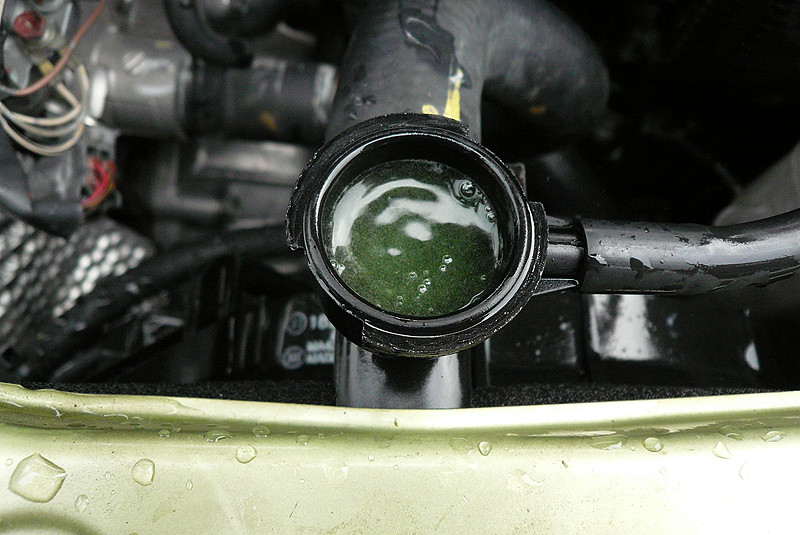
Radiators to a car is the skin to a human being. Without it, the body cannot release heat generated internally via the sweat glands. Similarly the radiator transfers the heat from the engine block to the coolant and out to the atmosphere through the radiator.
It's also said that for every degree lost is a horse-power gained. So it only makes sense that you change the coolant in the system to ensure maximum cooling efficiency (assuming your radiator fan and thermostat is in good working order).

http://farm7.static.flickr.com/6164/6140390324_ba0df4f439.jpg
Now, ideally you should catch the coolant fluid when you release it however I did a environmentally bad thing and released the fluids to the ground. Don't be like me. Should there be any tree huggers around your area you can be guaranteed to be harassed by those blokes if you don't dispose the coolant properly.
So anyway - start with a cool car. A hot car / coolant / everything is not fun to play with.
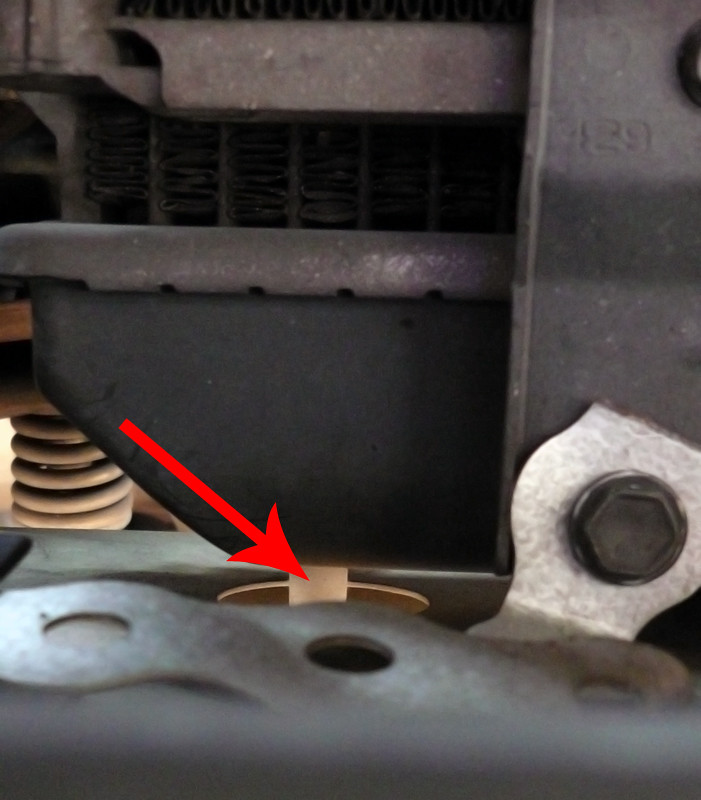
Look at the bottom of your radiator and locate the release valve.
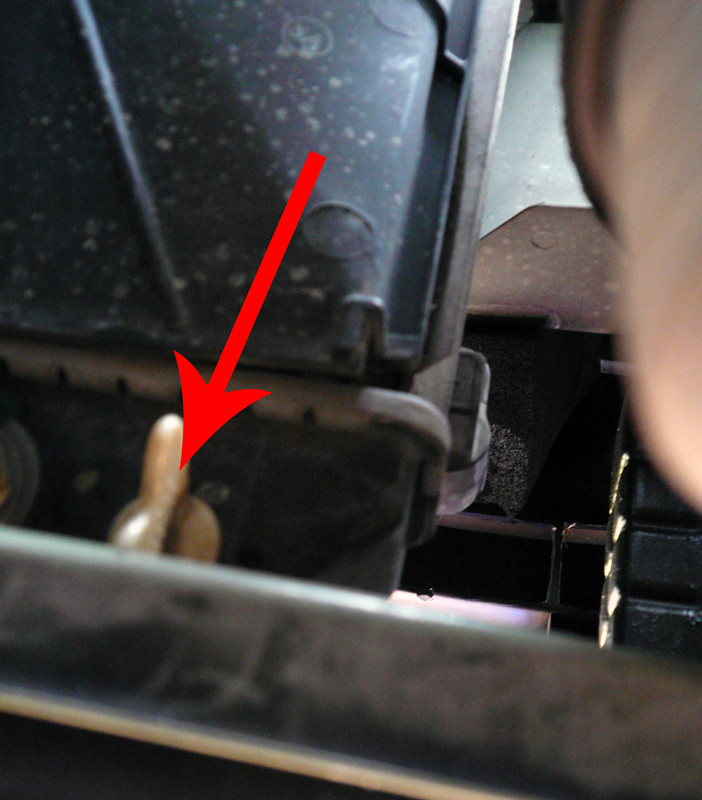
In my case it looks like this (sorry about the blur picture). The white knob is the coolant release valve. To get to the knob is not an easy task for people with stubby fingers like mine. So I used a long nose plier to turn the valve open.

Next up take out the reserve/overflow tank and clean it. 99% of the time it'll have sand or sediment in it. Rinse it with water or give it a scrub down, just make it clean.
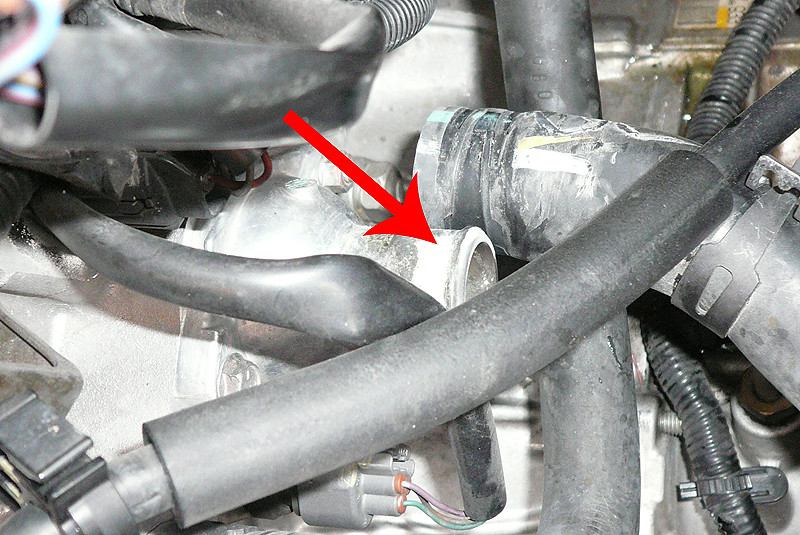
Due to the simplicity of the K3VE engine design, I can access my thermostat very easily. Two size 10 bolts and it's out.
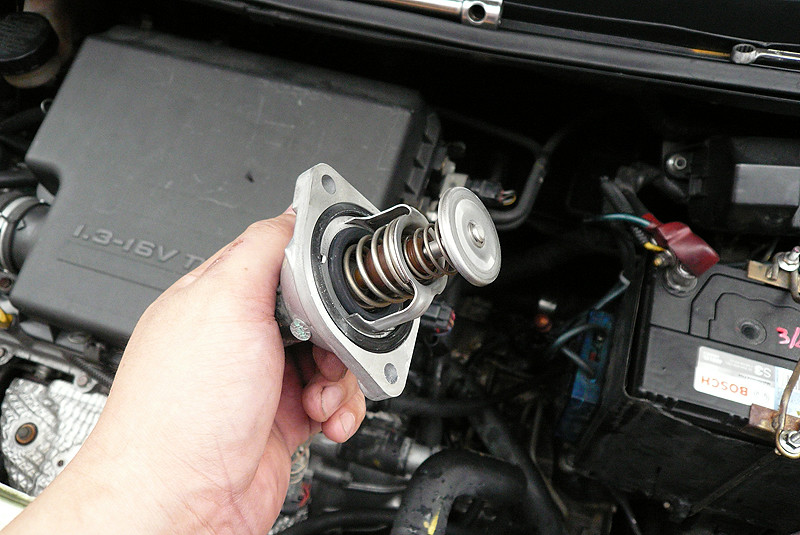
Now I happen to know mine is faulty (the spring hardened) so I replaced it with a new one. For those folks who don't know what the thermostat is for - it ensures your engine is heated up to the optimum temperature for the engine oil to flow at its optimum state, so don't ever throw it away! Too cold and your engine won't get lubricated properly and that's a big no-no. Too hot and you'll melt something. According to my thermostat labeling, the Myvi's ideal temperature is 80 degrees Celsius. That's when the thermostat opens and lets the coolant flow from the radiator into the block.
Now some thermostats are held in with a gasket or some sealant or both. If yours is not spoilt, I don't suggest you take it out. If yours is like mine, no sealant and just two nuts, no harm taking it out. It'll make the flush easier.
I pulled out my thermostat and hose for easy flushing later. 2 x size 10 nuts and one clamp to remove everything.
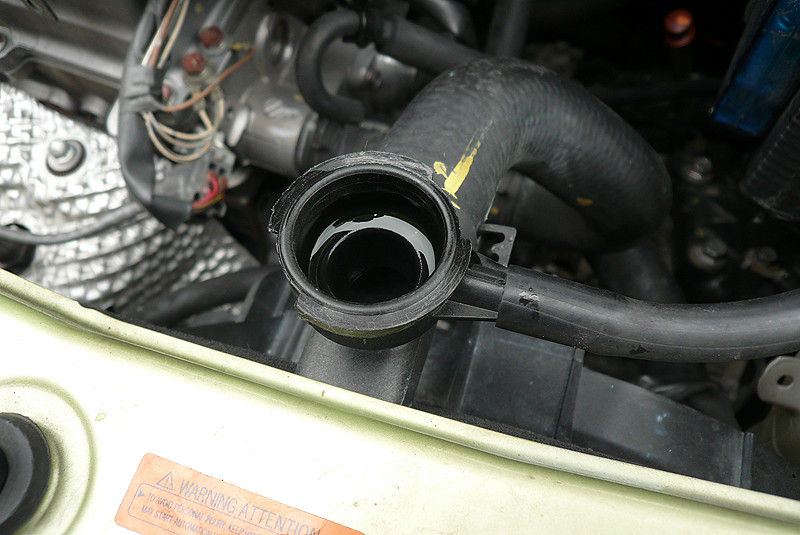
By now the coolant would have completely flowed out of your radiator. If not - you have forgotten to remove the radiator cap.

Reminder - Never open the cap if the engine is hot. Even the slightest bit hot, you'll have some pressure build up and that's nasty when you open it. So always open the radiator cap when cold.
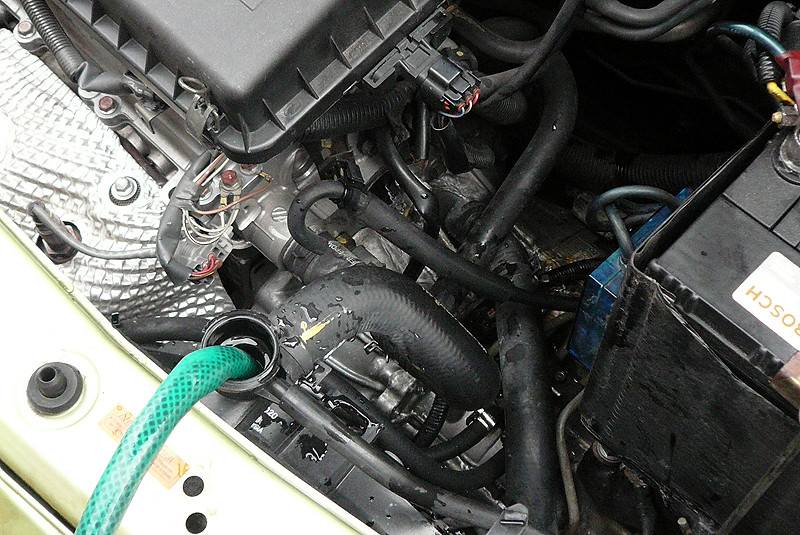
Close the release valve at the bottom of the radiator first. Then stick your garden hose down the radiator opening and let the water run. It'll come out of the engine block where your thermostat was and let it run until the water is clear. Then open the release valve and release all the tap water.
For those who can't remove their thermostats easily, don't close the release valve at the buttom and let the water run, fire up your engine and rev at 3k rpm until the radiator fan turns on. This indicates the thermostat has opened and water is flowing into the engine block and out of the release valve. Please note that the thermostat won't open for a good 15 to 20 minutes so be patient.
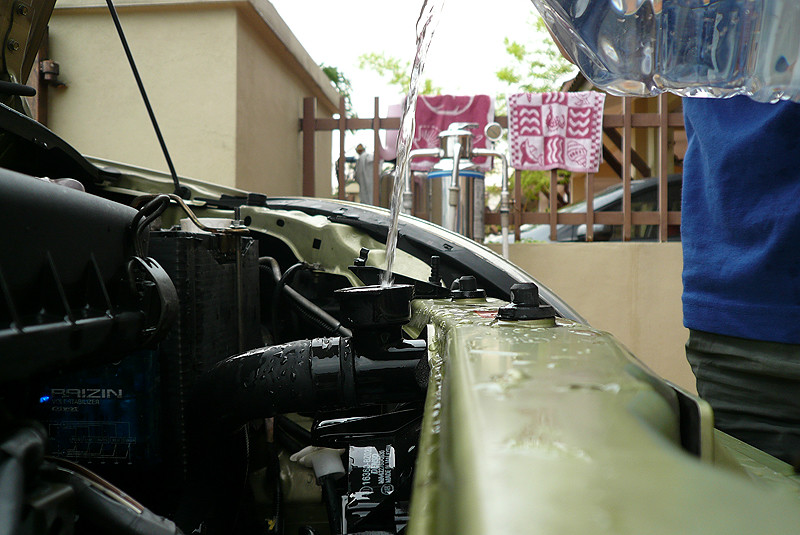
This next step is controversial. Some folks say tap water is sufficient to fill the radiator because the minerals and what not in the water will be burnt off at optimum engine temperature. I believe in using distilled water because distilled water contains no minerals to be left behind in the cooling system (which ultimately results in a blockage). In my car I personally don't think 80 degrees is going to burn off anything and more often than not leave deposits in the system.
So I flush using distilled water until my hearts content. RM5 for one large 5L bottle. I used up 1 bottle.
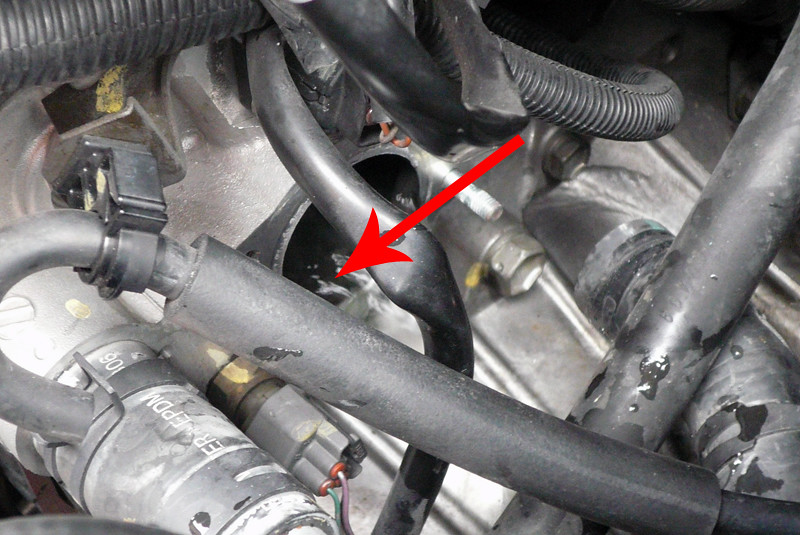
Ensure the water coming out of the engine block is clear and not coloured. One you're done flushing, re-install the thermostat, the thermostat housing and the hose.

Ensure your release valve at the bottom of your radiator is closed. Next up pour in 1 bottle of coolant (1L pure coolant) and fill up the rest with distilled water. Press the hoses to squeeze out any air bubbles that might be there.
Start up the engine and wait for the thermostat to open (the radiator fan will activate) and pour in more distilled water as the coolant level will drop. The thermostat will open up after 20 to 30 minutes of idling (you don't need to rev), keep pouring the distilled water if you see the coolant level drop.

By now the engine is already hot. The coolant will start bubbling and steaming so be careful not to touch it. It's freaking hot! Let it bubble and "burp" itself for a good 30 to 45 minutes, in-between which the thermostat should open a few times. Keep filling up until the coolant level stops going down and stops bubbling (you don't see much froth on top anymore as seen in the picture). Once complete turn off your engine and do any last minute topping up of distilled water and replace the radiator cap.
Replace the reserve tank (or overflow tank - whatever you call it) and fill it with a mixture of coolant and distilled water to the "maximum" level. Don't overfill this.
And you're done!
Time spent doing this DIY : Over 2 hours
Water wasted doing this DIY : Over 5 gallons
Explaining to your wife why you used perfectly good drinking water in the car : Priceless


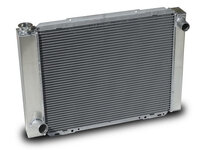



 :adore...
:adore...